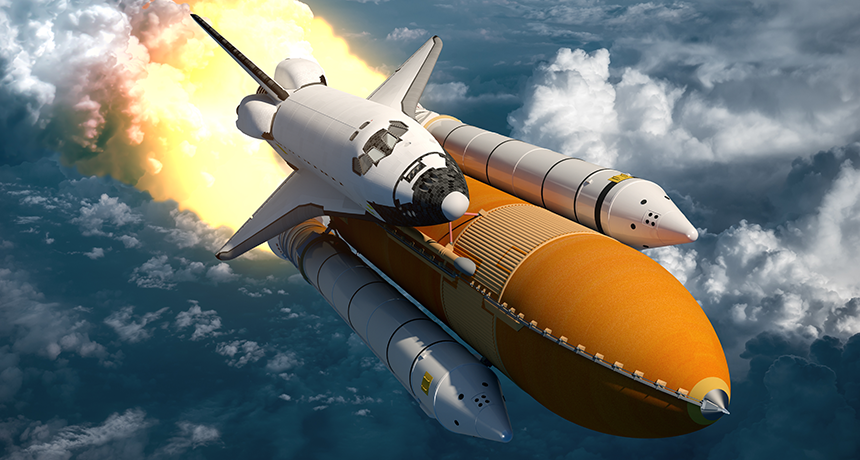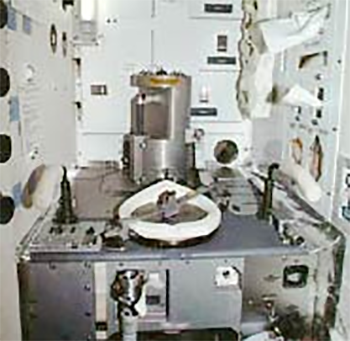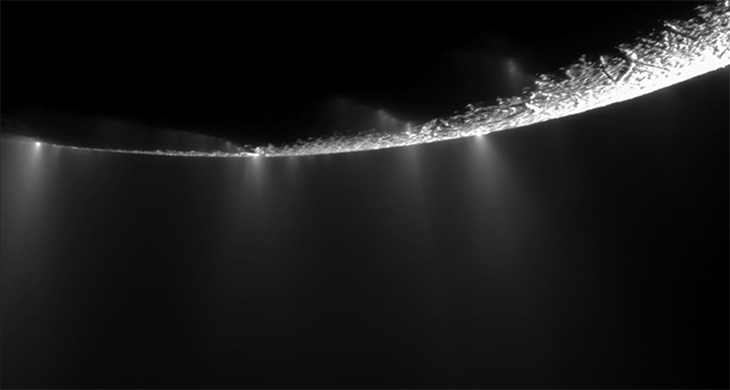astronaut Someone trained to travel into space for research and exploration.
astronomy The area of science that deals with celestial objects, space and the physical universe. People who work in this field are called astronomers.
Cassini A space probe sent by NASA to explore the planet Saturn. Cassini was launched from Earth in 1997. It reached Saturn in late 2004. The craft included a variety of instruments meant to study Saturn’s moons, rings, magnetic field and atmosphere.
Enceladus The sixth largest of Saturn’s more than 50 moons. Enceladus is bright white and covered with a thick shell of ice. Deep beneath that ice sits what appears to be a global ocean of salty liquid water. Enceladus is a round sphere, 500 kilometers (310 miles) across. It is a little less than one-third the width of Earth's moon.
Europa One of the moons of Jupiter and the sixth-closest satellite to the planet. Europa, 1,951 miles across, has a network of dark lines on a bright, icy surface.
fuel cell A device that converts chemical energy into electrical energy. The most common fuel is hydrogen, which emits only water vapor as a byproduct.
Jupiter (in astronomy) The solar system’s largest planet, it has the shortest day length (10 hours). A gas giant, its low density indicates that this planet is composed of light elements, such as hydrogen and helium. This planet also releases more heat than it receives from the sun as gravity compresses its mass (and slowly shrinks the planet).
molecule An electrically neutral group of atoms that represents the smallest possible amount of a chemical compound. Molecules can be made of single types of atoms or of different types. For example, the oxygen in the air is made of two oxygen atoms (O2), but water is made of two hydrogen atoms and one oxygen atom (H2O).
moon The natural satellite of any planet.
NASA Short for the National Aeronautics and Space Administration. Created in 1958, this U.S. agency has become a leader in space research and in stimulating public interest in space exploration. It was through NASA that the United States sent people into orbit and ultimately to the moon. It also has sent research craft to study planets and other celestial objects in our solar system.
nitrogen A colorless, odorless and nonreactive gaseous element that forms about 78 percent of Earth's atmosphere. Its scientific symbol is N. Nitrogen is released in the form of nitrogen oxides as fossil fuels burn.
particle A minute amount of something.
persistent An adjective for something that is long-lasting.
phosphorus A highly reactive, nonmetallic element occurring naturally in phosphates. Its scientific symbol is P. It is an important part of many chemicals and structures that are found in cells, such as membranes, and DNA.
planetary science The science of planets other than Earth.
plume (in geology) Fluids (air, water or magma typically) that move, largely intact, in a feather-like shape over long distances. (in environmental sciences) The movement of some gas or liquid, under the direction of gravity, winds or currents. It may be in air, soil or water. It gets its name from the fact that it tends to be long and relatively thin, shaped like a large feather.
Saturn The sixth planet out from the sun in our solar system. One of the four gas giants, this planet takes 10.7 hours to rotate (completing a day) and 29 Earth years to complete one orbit of the sun. It has at least 53 known moons and 9 more candidates awaiting confirmation. But what most distinguishes this planet is the broad and flat plane of seven rings that orbit it.
sulfur A chemical element with an atomic number of sixteen. Sulfur, one of the most common elements in the universe, is an essential element for life. Because sulfur and its compounds can store a lot of energy, it is present in fertilizers and many industrial chemicals.
vacuum Space with little or no matter in it. Laboratories or manufacturing plants may use vacuum equipment to pump out air, creating an area known as a vacuum chamber.
waste Any materials that are left over from biological or other systems that have no value, so they can be disposed of as trash or recycled for some new use.










